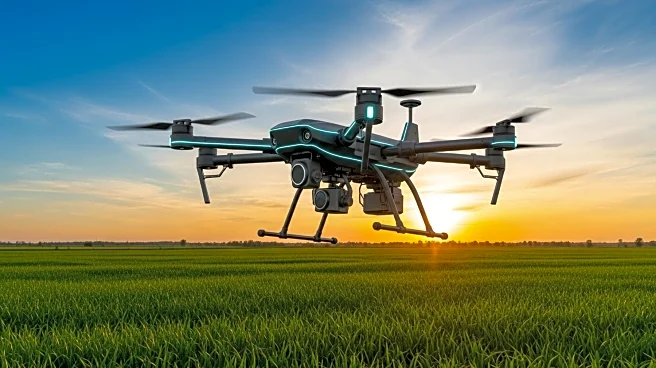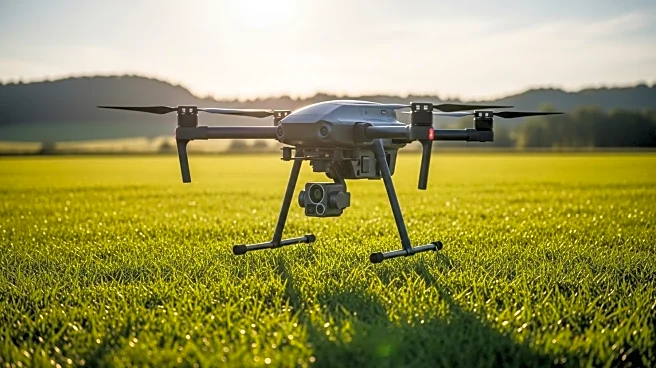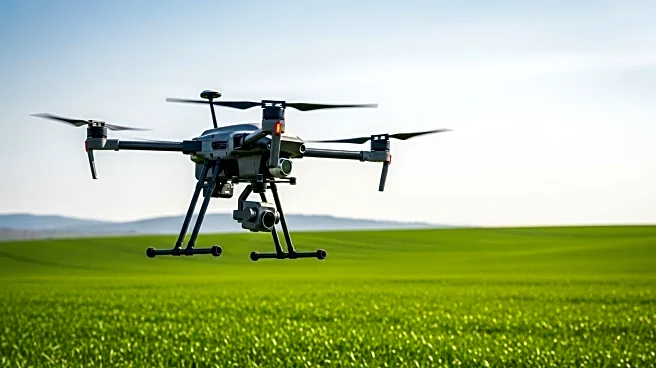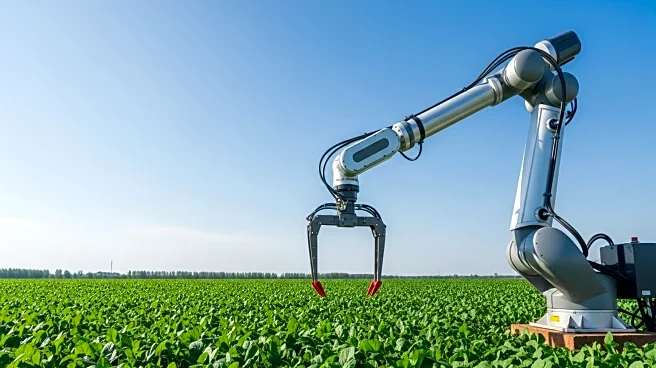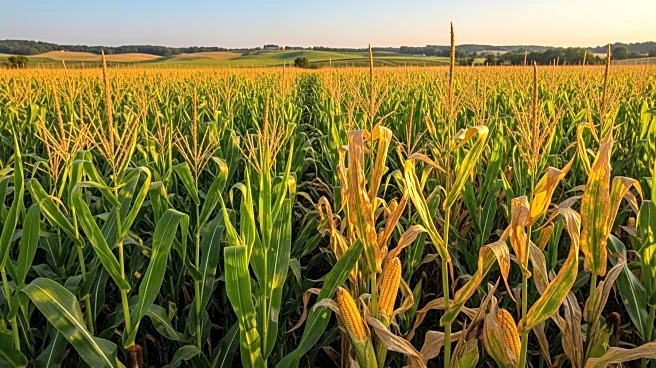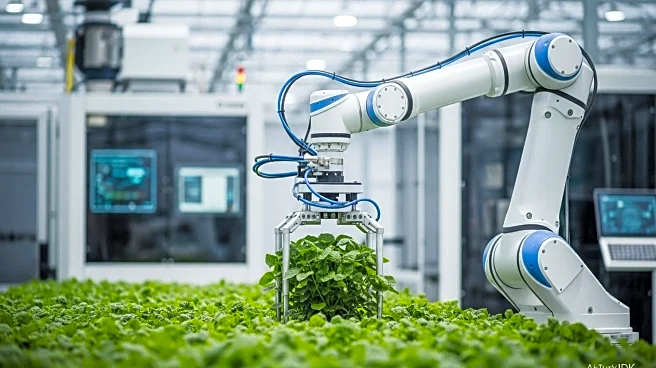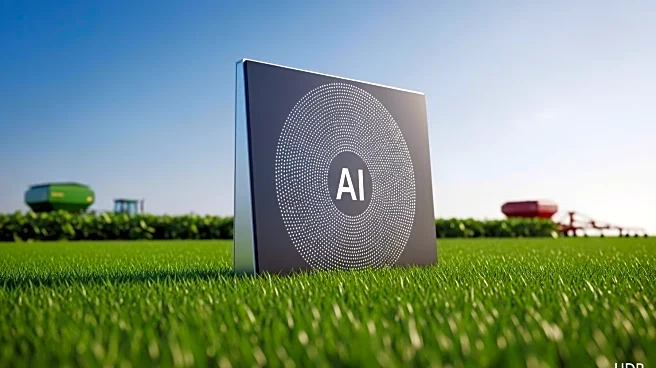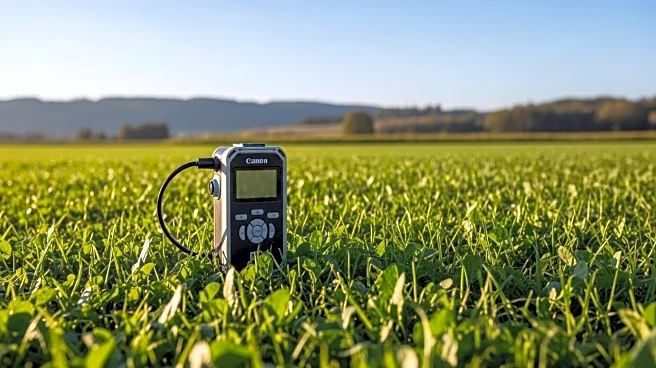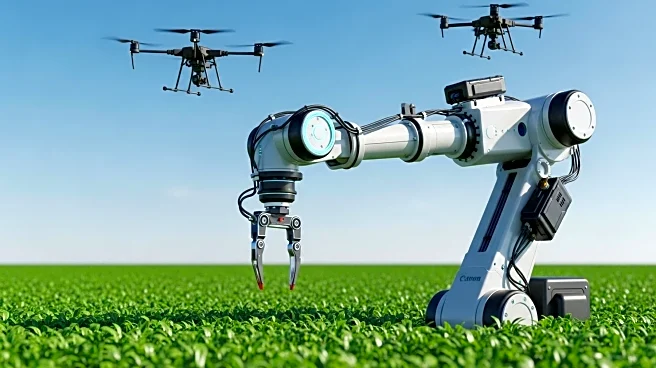What's Happening?
Modern agriculture is increasingly adopting advanced aerial technology to enhance crop management and productivity. Terralynx, formerly known as TerraNova UAV, has expanded its focus from drones to sophisticated data collection and analysis, aiding farmers and researchers. The company utilizes drones equipped with multispectral sensors and LiDAR to create detailed 3D field maps. These maps provide insights into plant health by capturing light beyond the visible spectrum, including red edge and near-infrared bands. This technology allows for early detection of plant stress due to pests, disease, or nutrient deficiencies, which are not visible to the human eye. The data collected is used to generate vegetation indices like NDVI, enabling farmers to develop prescription maps for precise fertilizer or fungicide applications.
Why It's Important?
The integration of AI and aerial tools in agriculture represents a significant shift towards more efficient and sustainable farming practices. By providing detailed insights into crop health and environmental conditions, these technologies help farmers optimize resource use, reduce waste, and increase yields. This approach not only enhances productivity but also supports environmental conservation by minimizing the overuse of chemicals. The ability to predict harvest timing and identify nutrient needs further empowers farmers to make informed decisions, potentially leading to increased profitability and reduced environmental impact. As agriculture faces challenges such as climate change and resource scarcity, these innovations offer promising solutions to ensure food security and sustainable farming.
What's Next?
The continued development and adoption of AI and aerial technologies in agriculture are likely to drive further advancements in precision farming. As these tools become more accessible, smaller farms may also benefit from data-driven insights, leveling the playing field with larger agricultural operations. Future innovations may include more sophisticated AI models capable of predicting long-term crop performance and environmental impacts. Stakeholders such as agricultural technology companies, farmers, and policymakers will need to collaborate to address challenges related to data privacy, technology access, and regulatory frameworks. The ongoing evolution of these technologies will likely shape the future of agriculture, emphasizing sustainability and efficiency.
Beyond the Headlines
The ethical implications of using AI and aerial tools in agriculture include concerns about data privacy and the potential for increased surveillance. As these technologies become more prevalent, there may be debates over who owns the data collected and how it is used. Additionally, the reliance on technology could lead to reduced employment opportunities in traditional farming roles, necessitating a shift in workforce skills. The cultural impact of these innovations may also influence farming practices, as traditional methods are replaced by technology-driven approaches. Long-term, these developments could redefine the relationship between humans and the environment, emphasizing a more data-centric approach to agriculture.

